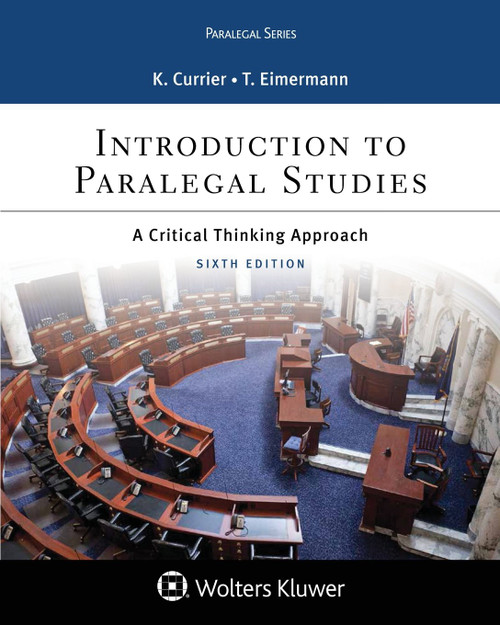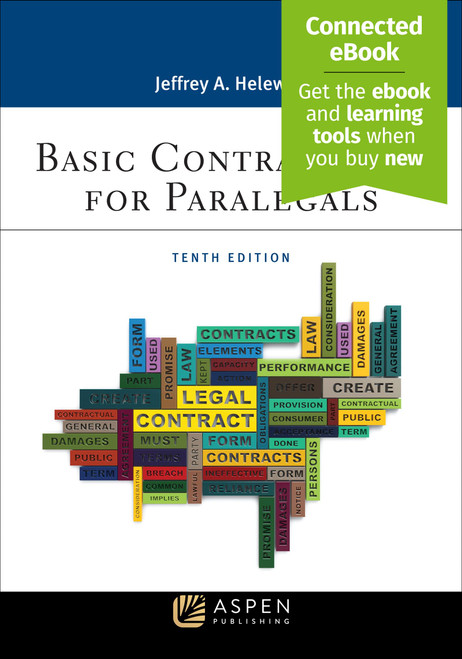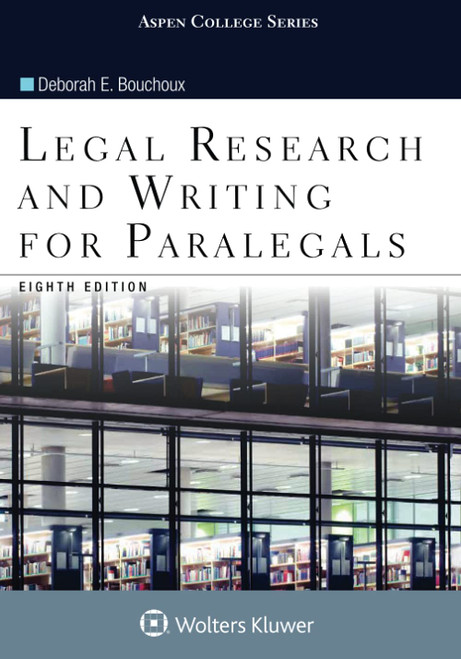Buy a new version of this textbook and receive access to the Connected eBook on CasebookConnect, including: lifetime access to the online ebook with highlight, annotation, and search capabilities, plus an outline tool and other helpful resources. Connected eBooks provide what you need most to be successful in your law school classes. A thoughtful new edition of the leading Introduction to Law for Paralegals text Introduction to Law for Paralegals: A Critical Thinking Approach explores high-interest topics and cases within the framework of the authors' acclaimed critical thinking approach. Hypotheticals, examples, and incisive questions shed light on both the principle and application of the law. In a thoroughly updated new edition, this leading text in the field continues to provide innovation and excellence. New to the Eighth Edition: Updated with changes in the law, new NetNotes, and additional Discussion Questions and Legal Reasoning Exercises. Criminal Law and Criminal Procedure are now directly after the chapter on Torts so that instructors can better compare and contrast civil litigation and criminal law. Streamlined chapter introducing the Study of Law and the Paralegal Profession. Professors and students will benefit from: Comprehensive coverage of key legal concepts. Hypotheticals, questions, and exercises that engage students in critical thinking. A logical three-part organization: Part I, Paralegals and the American Legal System; Part II, Finding and Analyzing the Law and Part III, Legal Ethics and Substantive Law. Student-friendly skill development for basic statutory and case analysis. Text is readable without talking down to students. Structure of chapters ensures that students understand and learn the material. Ethics Alerts, marginal definitions, Internet references, and legal reasoning exercises. Appendices on writing style and citation, the U.S. Constitution, Ethical Codes, and additional Net Notes.
Introduction to Law for Paralegals: A Critical Thinking Approach [Connected eBook](Aspen Paralegal)
Aspen Publishing
MSRP:
Was:
Now:
$213.27 - $252.69
(You save
)
(No reviews yet)
Write a Review
 Introduction to Law for Paralegals: A Critical Thinking Approach [Connected eBook](Aspen Paralegal)](https://cdn11.bigcommerce.com/s-rr0pkl7rnl/images/stencil/500x659/products/50272/99988/81LzVpLGBoL__18942.1706207680.jpg?c=1)
Write a Review
 Introduction to Law for Paralegals: A Critical Thinking Approach [Connected eBook](Aspen Paralegal)](https://cdn11.bigcommerce.com/s-rr0pkl7rnl/images/stencil/500x659/products/50272/99988/81LzVpLGBoL__18942.1706207680.jpg?c=1)
Aspen Publishing
Introduction to Law for Paralegals: A Critical Thinking Approach [Connected eBook](Aspen Paralegal)
- SKU:
- UPC:
- 9781543858471
- Maximum Purchase:
- 2 units
- Binding:
- Hardcover
- Publication Date:
- 2/8/2023
- Author:
- Katherine A. Currier
- Language:
- English: Published; English: Original Language; English
- Edition:
- 8
- Pages:
- 780

Brand: Wolters Kluwer
Introduction to Law for Paralegals: Critical Thinking Approach, 5th Edition (Aspen College Series)
MSRP:
Was:
Now:
$45.31 - $158.78

Brand: Aspen Publishers
Intro To Law for Paralegals: A Critical Thinking Approach
MSRP:
Was:
Now:
$46.04 - $59.19

Aspen Publishers
Introduction to Paralegal Studies: A Critical Thinking Approach
MSRP:
Was:
Now:
$34.34 - $57.70

Aspen Publishers, Inc.
Introduction to Paralegal Studies: A Critical Thinking Approach, Fifth Edition (Aspen College)
MSRP:
Was:
Now:
$76.28 - $300.00

Aspen Publishing
Basic Contract Law for Paralegals (Aspen Paralegal Series)
MSRP:
Was:
Now:
$114.35 - $129.20

Aspen Publishers
Real Estate and Property Law for Paralegals (Aspen Paralegal Series)
MSRP:
Was:
Now:
$78.70 - $103.20

Aspen Publishers
Ethics and Professional Responsibility for Paralegals (Aspen Paralegal)
MSRP:
Was:
Now:
$51.95 - $129.20

Cengage Learning
Introduction to Paralegal Studies: A Practical Approach
MSRP:
Was:
Now:
$18.16 - $300.00

Aspen Publishers
Legal Research and Writing for Paralegals (Aspen Paralegal Series)
MSRP:
Was:
Now:
$25.09 - $300.00
!
 Introduction to Law for Paralegals: A Critical Thinking Approach [Connected eBook](Aspen Paralegal)](https://cdn11.bigcommerce.com/s-rr0pkl7rnl/images/stencil/50x50/products/50272/99988/81LzVpLGBoL__18942.1706207680.jpg?c=1)